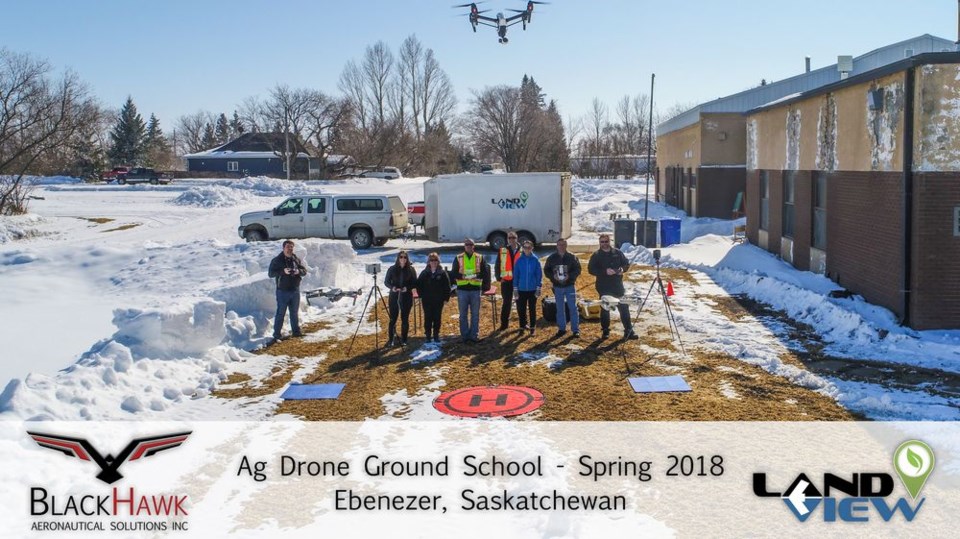At a school held in Ebenezer on March 21-22, Canora and area farmers saw how modern drone technology can help boost their bottom line.
Markus Weber is president of LandView, an Alberta-based company which sells complete unmanned aerial systems for agriculture, also known as drones.
“Drones were made for consumer use, but because it’s a robot, it has been utilized for industrial applications as well,” said Weber.
Since drones are robots and not aircraft, they are very simple to use. Weber said a remote control tells the drones whether to go lower or higher, but the robot figures out how to do the actual flying.
Weber said most of the drones in use right now can be effective in winds up to approximately 20 kilometres per hour at their flying altitude, which is usually a maximum of 300 or 400 feet. Icing is another factor which can prevent a drone from operating properly.
He said the optimal altitude for a drone depends on the work it’s doing.
“For regular crop scouting you would generally stay below 50 feet, but for mapping you’d want to be up as high as you can legally go, likely 300 or 400 feet.”
Weber said there were three main purposes for the drone school.
“We wanted to give the knowledge needed to fly legally, teach prospective users how to fly safely with the proper maintenance and knowing what to look for in the weather, and how to get the best possible value for agriculture uses.”
Weber said drones can be used for multi-spectral imaging in farm fields, which shows near infrared light reflected by the plant on a map.
“The light produced ranges from dark green for a very healthy plant to dark red for an extremely unhealthy plant. If a farmer has a large dark red patch in a field, he or she can go in, determine the problem, and attempt to determine a solution.”
The same technology can be used to make a yield potential map in mid-season. If a farmer sees consistent dark green on a field map around early to mid-summer, he may choose to make a supplemental fertilizer application to further boost the yield potential.
Weber said when utilizing the drones for crop scouting, users can get within just a few feet of the crop to see if there are problems such as uneven germination, skips where spraying or seeding equipment wasn’t working properly, or patches where plants have been damaged by pests such as cutworms. Since the drones fly, they can usually get to areas which are difficult to reach on foot.
For more information on drones, farmers may contact Glenda at the Ebenezer Agro Centre.




